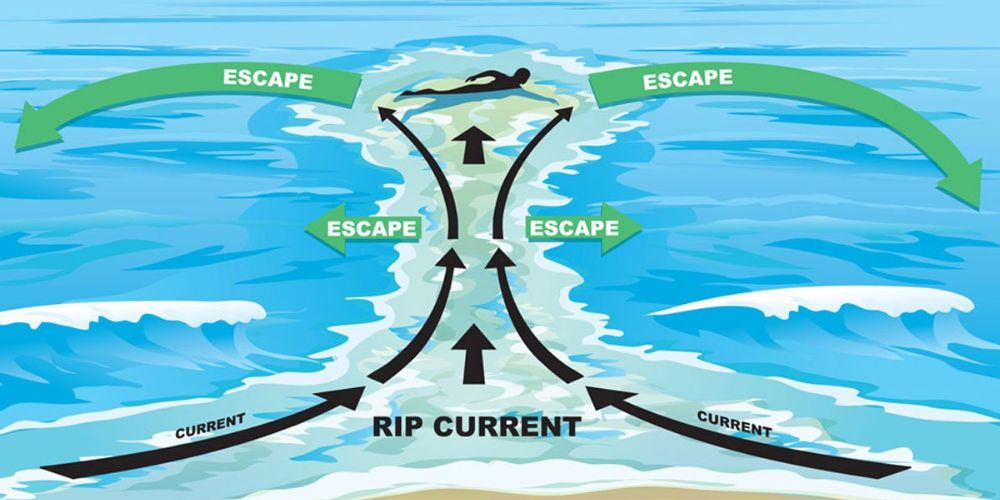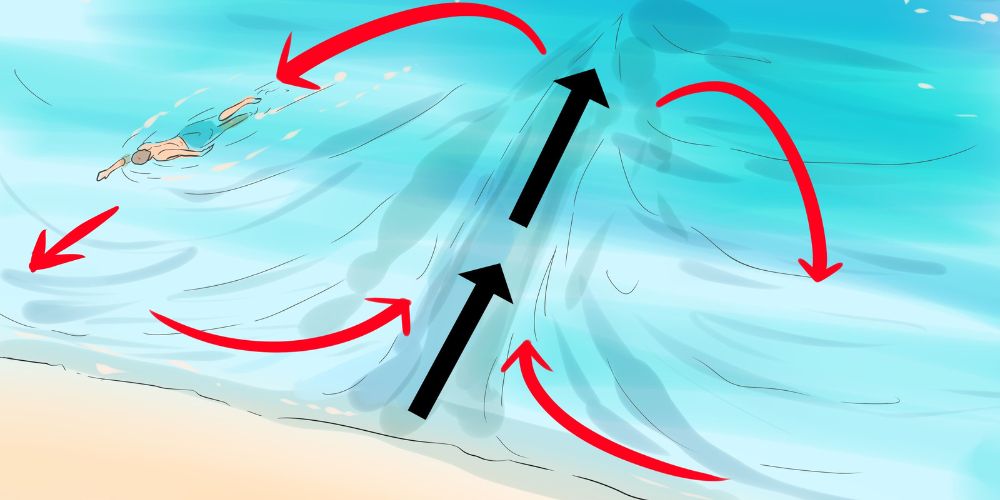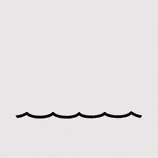As surfers, we want noodle arms because we caught dozens of waves, not because we got stuck in a rip current. In surfing, understanding rip currents are almost as essential as knowing how to swim.
A “rip” is something every surfer will encounter, and knowing how to handle it is an important part of surfing safety. Learn more about what a rip current is, how to identify a rip, and how to stay safe when you encounter one.
What Is a Rip Current?

Image Source:- https://kumpulanthread.com/liburan-ke-pantai-berujung-maut-pantai-soge-pacitan
The National Ocean Service defines a rip as a current that flows perpendicular to the shore. It happens in a localized area and flows directly out from shore. Rip currents are usually less than 25 meters wide.
Basically, a rip current is a small river flowing from the shore, through the whitewash, and beyond where surfers are catching waves. Like a river, a rip has a lot of force. It can quickly take a swimmer or surfer farther out to sea than they want to be.
Fortunately, scientists thoroughly researched rip currents and how they work. That makes it easy for surfers and ocean lovers to understand rip currents and the steps to staying safe.
How to Identify a Rip Current
Spotting a rip current takes experience. Eventually, you’ll be able to spot where rip currents are (if any) as soon as you arrive at the beach.
The following are a few characteristics of rip currents that will help you identify them:
Darker Water
The water in a rip current is usually a different color than the surrounding waters. It’s typically darker because the rip is deeper and carries a lot of water.
Fewer Breaking Waves
Waves don’t break as often in a rip current. That’s because waves tend to break in shallow water, and the water in a rip is quite deep.
Sand and Debris
The water in a rip may also be sandy well beyond the surf zone. The current carries sand and debris from the shore and surf zone out to sea. As the current gets farther into the ocean and slows, it may drop the sand and debris, creating a murky patch.
Lifeguards may also use flags or signs to mark rips. Lifeguards are excellent resources, so don’t be shy to ask them about rip currents and where they are.

Image Source:- https://how-what-make.com/13196038-rip-dvds-with-vlc
Why Are Rip Currents Dangerous for Surfers?
Many surfers assume they’re safe from rip currents because they’re attached to giant flotation devices (the surfboard). However, rips are strong and quick.
A rip current can reach a speed of more than 2 meters per second and can carry a person 100 meters into the ocean in one minute. A swimmer or surfer may not even notice they’re in a rip before they’re already out to the sea.
Paddling against the current of a rip is exhausting and sometimes impossible. Surfers who don’t understand how to escape rip currents can put themselves and others in danger.
All those cutbacks, hacks, and tubes mean nothing if you can’t get back into shore to tell your friends about them.
Are They Really Dangerous During Surfing?
Rip currents are not as dangerous for surfers as they are for swimmers, because surfers can use their boards as floatation devices. They tend to be more dangerous for beginner surfers and weak paddlers, as they can tire more easily.
More advanced surfers use rip currents to their advantage. A rip can conveniently pull a surfer into the lineup without taking too many waves on the head.
Note: we only recommend using a rip as your personal ocean chauffeur if you’re a strong paddler with ample ocean knowledge.

How to Tackle Rips During Unwanted Situations
Every avid surfer will encounter rip currents, so it pays to know what to do when you get caught in one.
- Rule No. 1: Don’t panic. You’re going to be okay.
- Rule No. 2: Never paddle against a rip current toward shore. Even the best paddlers in the world can’t beat the speed and power of a rip.
The following are the steps to take to free yourself from a rip, whether you decide to keep catching waves or call it a session.
- Stay calm and stay on your surfboard.
- Paddle parallel to the shoreline until you no longer feel the rip pulling you out to sea. You may also notice the water get lighter and less sandy — a sign you’re in the safe area outside of the rip.
- Catch your breath in the safe zone, then paddle toward the shore.
Conclusion
Rip currents are a common fear among beginner surfers. Fortunately, rip currents are pretty easy to spot from the shore or while sitting on your board in the lineup. Paying attention to your surroundings and knowing how to get out of a rip when caught in one can ease fears and keep you safe.
The Mentawai islands are an ideal surf destination for all levels of surfers. The low season, when waves are fun-sized and rip currents are fewer, is the best for beginner and intermediate surfers.
Our Hollow Trees surf guides are experts on all of the world-class waves and beginner surf spots in our area. They’re always aware of rip currents and share their knowledge with guests. Don’t be afraid to ask our team more about local rip currents to put your mind at ease and enjoy your best surfing trip yet in the legendary Mentawai islands.
Banner Image Source:- https://lakeaccess.org




